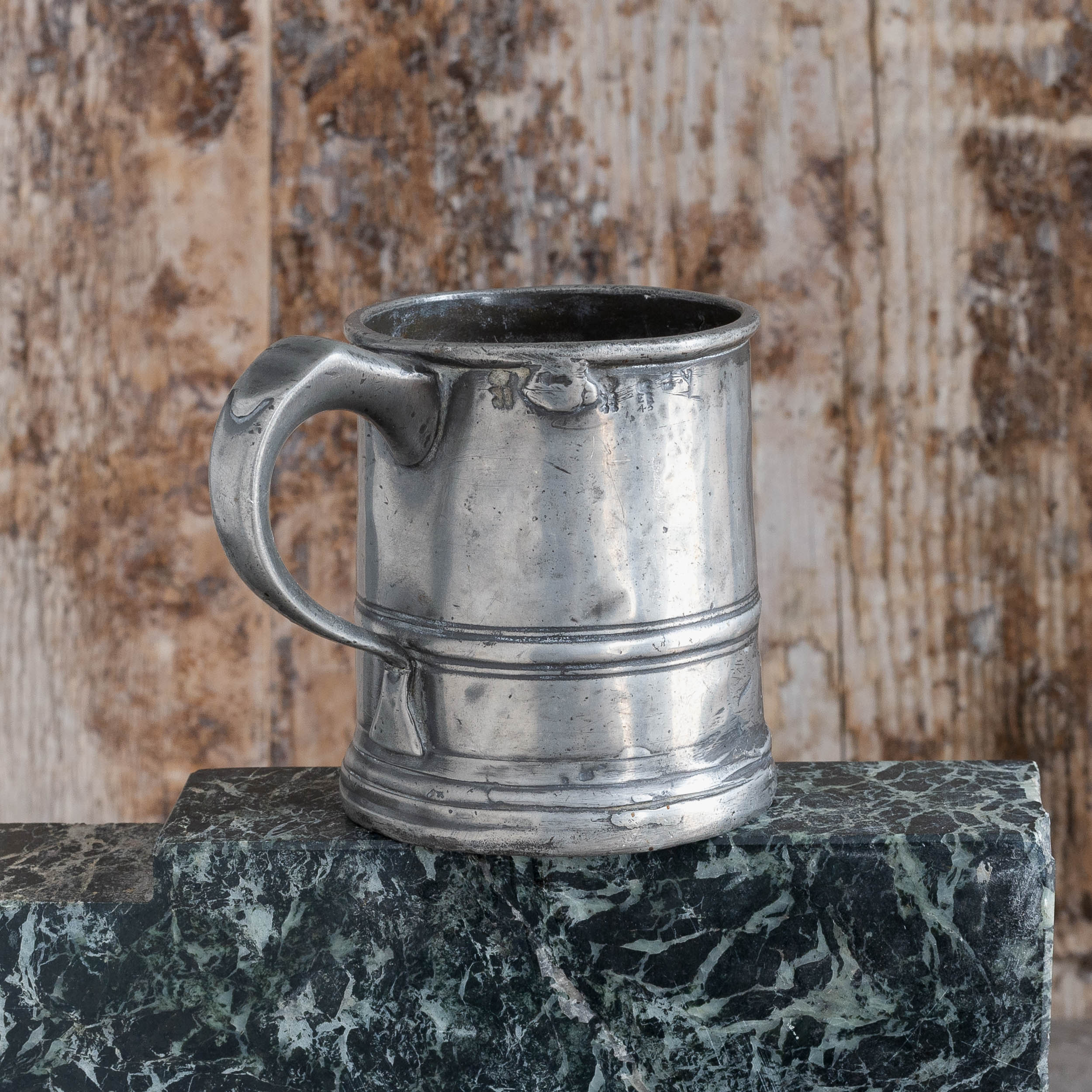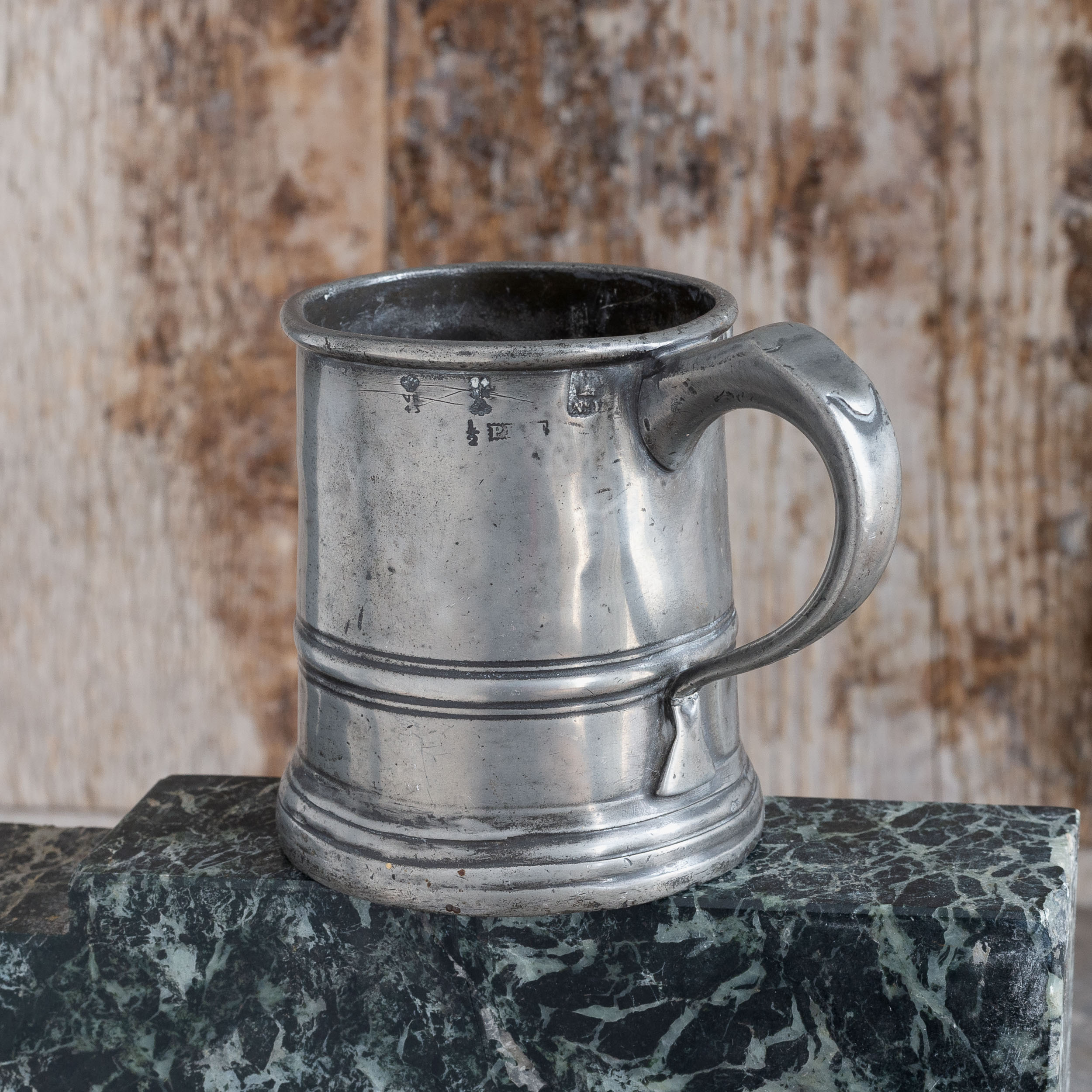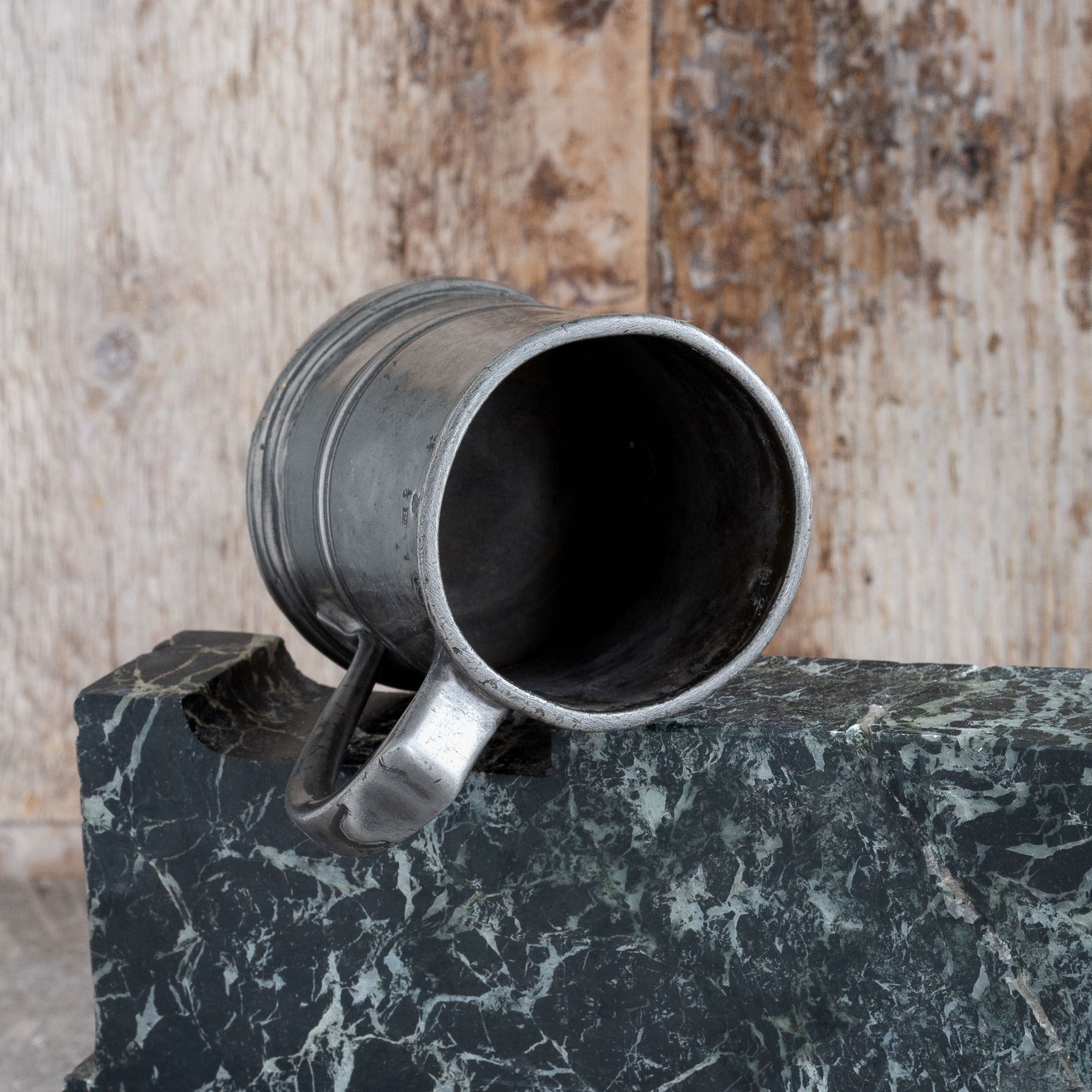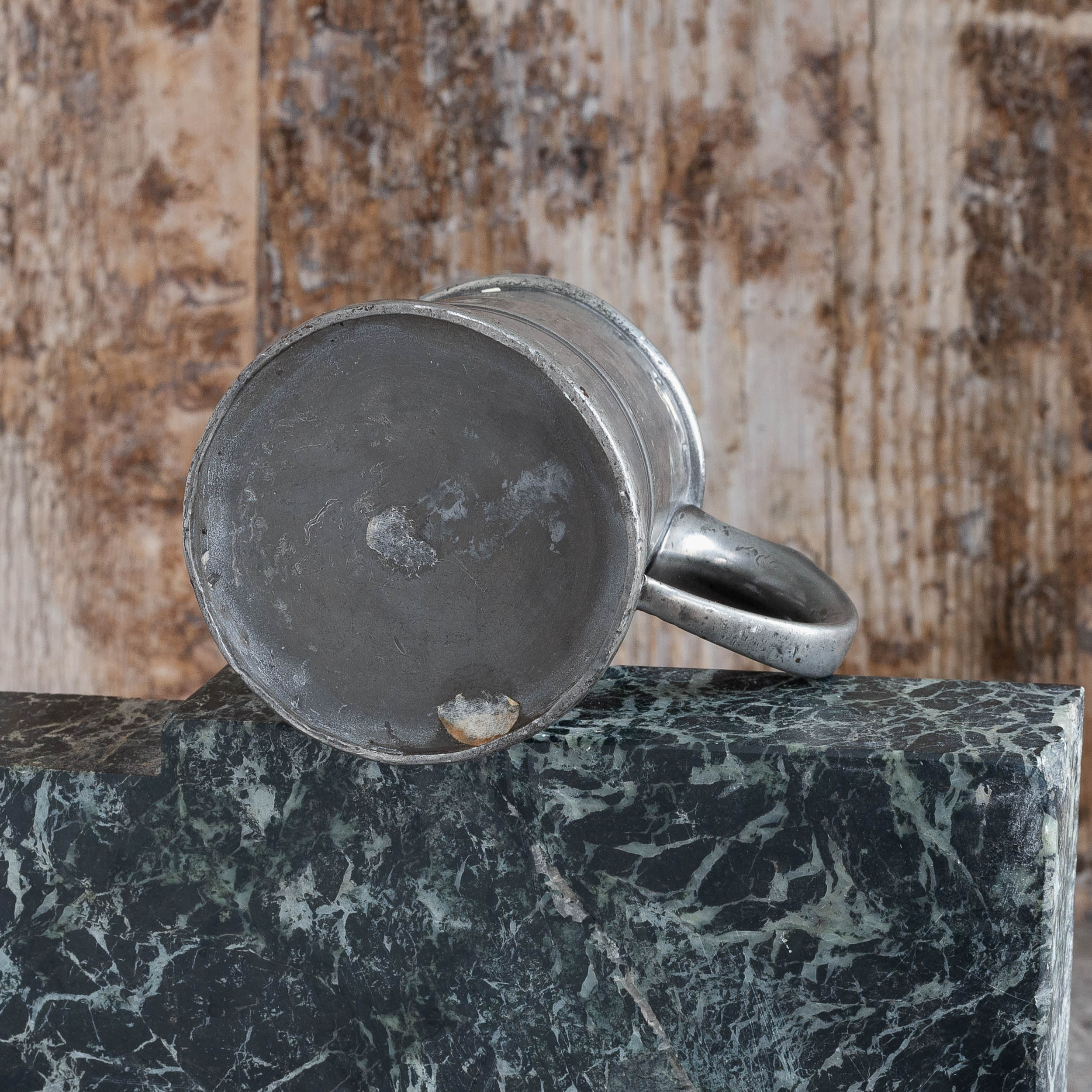Antique English Pewter Half Pint Ale Mug
An early 19th Century pewter Ale Mug with broad banding and turned rim with a 'broken' style handle and thumb-piece all on a heavy ogee moulded base.
The Pewterers marks indicate an early date and long use with a Victorian Standard Measure of 1879 super-added to a pre-existing and already antiquated Pre-Imperial William III Ale-Standard (pre 1820's) as well as a George IV mark of 1826.
The Capacity Mark of 1836 indicates a true Half-Pint measure.
£80 each
In stock
Until the adoption of mass-produced commercial glassware in the Mid 19th Century the Pewter Mug was the customary vessel in which most people in Britain would take their Ale, Cider or Beer.
Mugs and Tankards were often the private property of individuals and were merely deposited in the ale houses which they regularly frequented.
A Mug, as distinguished from a true Tankard by its open, unlidded top, could come in any of the English customary measurements tanging from a Half Pint up to a full Gallon in capacity.
In a tradition dating back to the earliest Witengamots of the Saxon Kings of England, Mugs, Tankards, Flagons, Cups and liquid measures of all kinds were strictly liable to periodic inspection by His Majesty’s officers. Thus one can see, through the Standard Marks on many such vessels, the development of British Weights and measures down the centuries.
While it is inadvisable to drink from pre-19th century pewter, the lead content being too high, vessels from after 1770 were manufactured from the new ‘Britannia’ alloy discovered by James Vickers of Sheffield and there are no restrictions on its use for drinking.
Recently Viewed Items
-
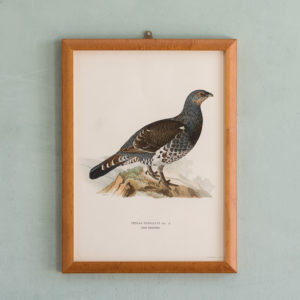
Swedish Birds (Svenska fåglar, efter naturen och på sten ritade)
Swedish Birds (Svenska fåglar, efter naturen och på sten ritade)
Magnus von Wright started out as a taxidermist in the 1820's, he stuffed birds for Societas pro Flora et Fauna Fennica, the oldest scientific society in Finland, and in 1845, became taxidermist a the university's zoological museum. Von Wright; though a skilful taxidermist, his reputation like that of his two brothers, Wilhelm and Ferdinand, rests on his skill as a zoological illustrator. The first edition of Svenska fåglar, efter naturen och på sten ritade, appeared between 1828 and 1837 and in 1859 he published the first handbook on Finnish birds. These chromolithographs are from the second edition Svenska fåglar, efter naturen och på sten ritade, published c1920 and printed by A. Bortzells, Stockholm. 'Tetrao Urogallus'.

